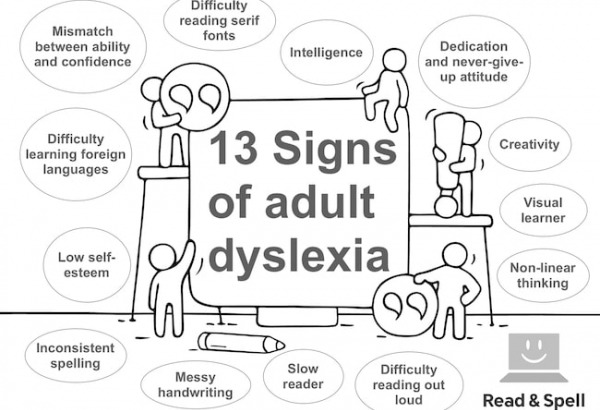Teaching literacy skills to adults

Teaching reading to older learners can be a challenging experience for educators in adult basic skills programs. Teachers may find that every student in a classroom requires different material and that individuals vary greatly in ability level depending on their earlier experiences with reading instruction.
Often students experience frustration and anxiety that can get in the way of learning. They may have negative associations with school or learning difficulties that have gone undiagnosed and cause them to struggle with the basics of sounding out words.
However, with the right strategies in place and plenty of patience, praise and encouragement, teachers can help adult students overcome these challenges and reach their full potential.
Working with adult students
Motivation
Many adults want to improve their literacy skills so they can get a higher paying job. Acquiring stronger literacy skills can open up new careers and often leads to promotions at work. Sometimes motivation comes from children who are learning to read themselves. Parents who are strong readers are better able to assist their kids with schoolwork or even read them a bedtime story.
TIP: It’s important for teachers to get to know their students as individuals and understand the reason they have chosen to go back to school to learn how to read. Reminding an adult why he or she is challenging him or herself can make all of the difference in helping a learner stay motivated when the going gets tough.
Confidence
Older learners often lack confidence in the classroom. This may be due to past failures at school or feeling uncomfortable and embarrassed about learning how to read at an older age. Teachers can assist students in keeping anxiety at bay by setting attainable goals. Help learners build confidence and increase self-esteem by recognizing them for their efforts. Just making the decision to go back to school means they are already on the path to success. Provide plenty of positive feedback and praise students for their achievements, no matter how small.
Self-efficacy
This sums up a student’s approach to learning. Acquiring literacy skills as an adult is not easy and learning how to read can seem overwhelming at times, even to the most motivated learners. However, breaking the task down into smaller, more manageable steps helps adult students reach their goal through self-directed learning. They may start by going through the alphabet and engaging in concentrated phonics review, move on to decoding and then begin memorizing sight words in order to gradually increase reading ability.
Convenience
A step-by-step approach means adults have the opportunity to repeat units of learning until material is mastered. This is especially helpful in studying phonics in order to sound out words. Adult learners like being in control. Allowing them to set the pace of learning empowers them. Self-directed learning also means they can continue providing for their families and learn how to read in their free time.
Visit our posts on Adult Basic Skills Programs and Teaching Adults to Read for additional background.

Tips for teachers
-
Be patient. Adult students may take longer than children with reading, particularly if there is a learning difficulty involved. Give them plenty of time and use electronic resources when possible to provide opportunities for overlearning and practice with automatized feedback.
-
Be positive. Don’t let your students get discouraged by the challenges they are facing. Create a welcoming class environment in which learners can be themselves. A positive attitude will rub off on others and help students feel less anxious, which in turn makes it easier to learn.
-
Be respectful. The student-teacher dynamic often implies a particular power structure with younger learners. The teacher is responsible for explaining the lesson and disciplining the class. However, teaching adults can be tricky, particularly when the teacher is younger than his or her students. Remember to respect adult students in the same way you would outside the classroom. Teachers of adults facilitate learning and provide support vs. direction.
-
Be creative. Make reading something adults look forward to by selecting text, even at the sentence level, that makes them laugh or piques their interest. You can use graded readers to bring in literature when possible and even try out various genres such as poetry or satire to mix things up and keep them on their toes.
Recognizing learning difficulties
Dyslexia
Dyslexia is a learning difficulty that affects spelling, reading and writing ability. No two individuals will present with the same set of symptoms, but it commonly causes difficulty with hearing the distinct sounds that make up words. This in turn affects decoding skills. In other words, it makes it harder to sound a word out, which is a crucial step in early reading. Learners may benefit from memorizing high frequency English vocabulary, such as sight words. Learn more tips and strategies for helping dyslexic students.
Dyspraxia
Adults who struggle with fine motor skills may have a form of dyspraxia. This makes it difficult to hold a pencil and can cause messy handwriting and even impact planning skills. Learn how to help dyspraxic students in the classroom.
Dysgraphia
A condition that causes difficulties in writing, dysgraphia can make handwriting painful and frustrating for students. The best alternative is for learners to acquire touch-typing skills and produce written assignments on the computer vs. with a pen and paper.
Slow processing
Some adults may master decoding but still struggle with comprehension skills. This can sometimes be a result of slow processing in which they simply require more time than their peers to understand what has been read. Teachers can help by encouraging learners to engage in top-down reading strategies that activate relevant content and vocabulary and make it easier to use prior knowledge to help construct meaning.

How reading works
Reading in English requires individuals to have a working knowledge of the alphabet and to be able to map sounds to letters. In this way, they can sound words out until they are familiar enough with the vocabulary to recognize it by sight.
The more vocabulary an adult knows, the easier it will be to guess at the meaning of unknown words encountered. Greater units of meaning can be found at the phrase, sentence and paragraph level.
Following narratives and identifying the gist, main ideas and specific details of a text are all part of reading comprehension, in addition to making inferences about what has been read. Strong readers rely on their prior knowledge about a topic, genre and text type in order to help them construct meaning.
Improving writing
With reading comes writing ability. Writing is a cognitively challenging activity that involves translating thoughts into language, organizing ideas in such a way that a reader can follow the writer’s train of thought and accessing knowledge of grammar, spelling and written language conventions.
High frequency vocabulary and words that are important and useful to the individual are likely to transfer to productive use first. It’s important to read often as the more an individual encounters complex structures, ideas and less frequent vocabulary, the more likely they will be to use these elements in their own writing.
Computer skills
Many adults with poor literacy skills also struggle to use computers. Luckily, teaching writing and spelling lends itself to practice with word processors. The more students familiarize themselves with computers, the easier it will be to research on the web and access online resources, including dictionaries and flashcard apps.
Taking a touch-typing course can be a good way to introduce writing on a computer and reinforce phonics and spelling skills at the same time. It’s also an opportunity for adult learners to practice their skills without being embarrassed, as the focus of the course is to teach the keyboard.
English language learners
Beyond a certain threshold, literacy skills transfer from a learner’s first to second language. If your student was a strong writer in his or her first language, it is likely he or she will develop a similar ability level in English.
Teachers can help the process along by reinforcing spelling, which can be quite tricky for English language learners due to the high number of exceptions to the rules and lack of 1:1 sound letter correspondence (there are multiple ways of writing the same sound). Learn more about strategies for ELLs.
Do you have any tips on teaching literacy skills to adults? Send us an email and join the discussion!
For adult learners
TTRS is a program designed to get adults with learning difficulties touch-typing, with additional support for reading and spelling.
Chris Freeman
TTRS has a solution for you
An award-winning, multi-sensory course that teaches typing, reading and spelling

How does TTRS work?
Developed in line with language and education research
Teaches typing using a multi-sensory approach
The course is modular in design and easy to navigate
Includes school and personal interest subjects
Positive feedback and positive reinforcement
Reporting features help you monitor usage and progress













